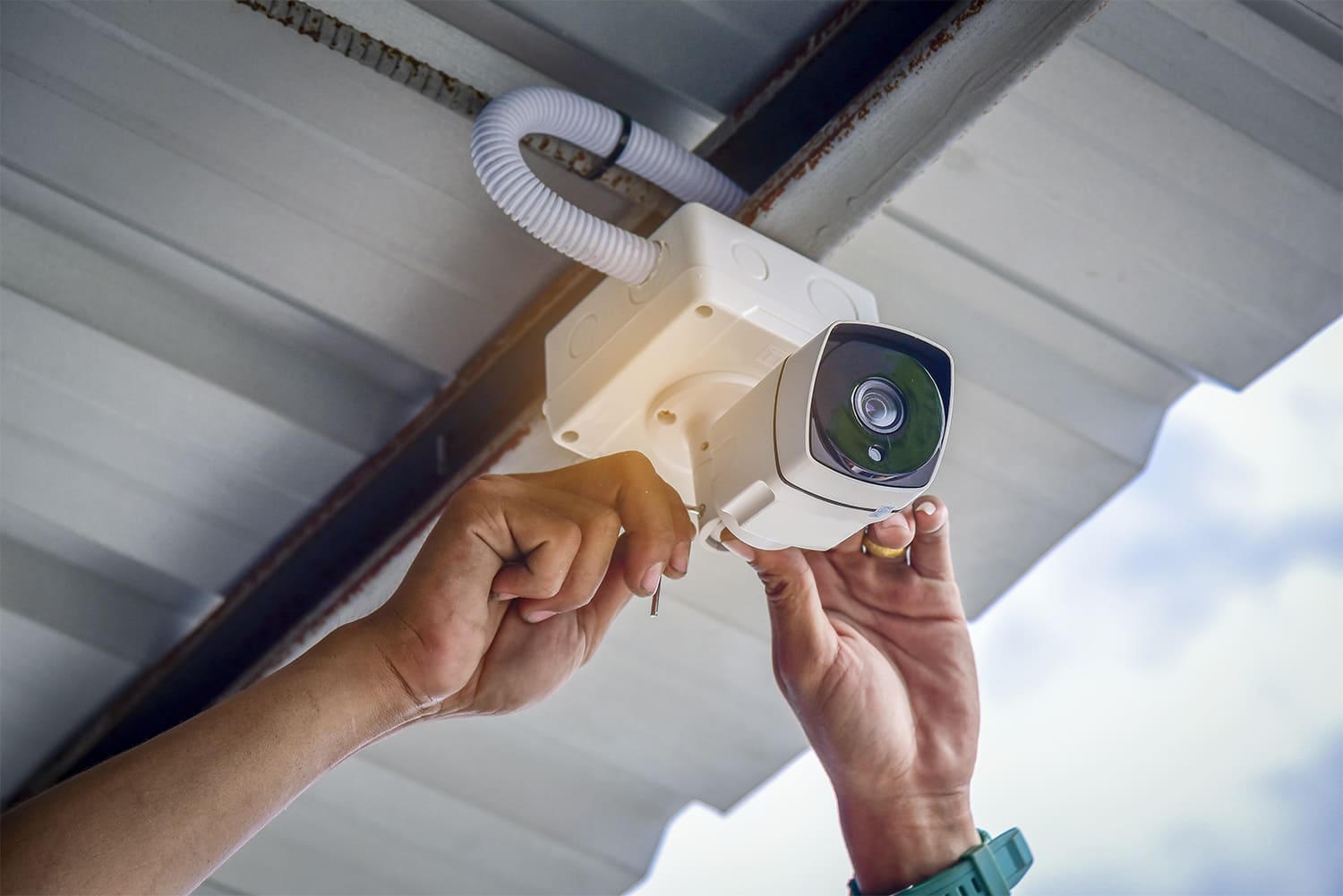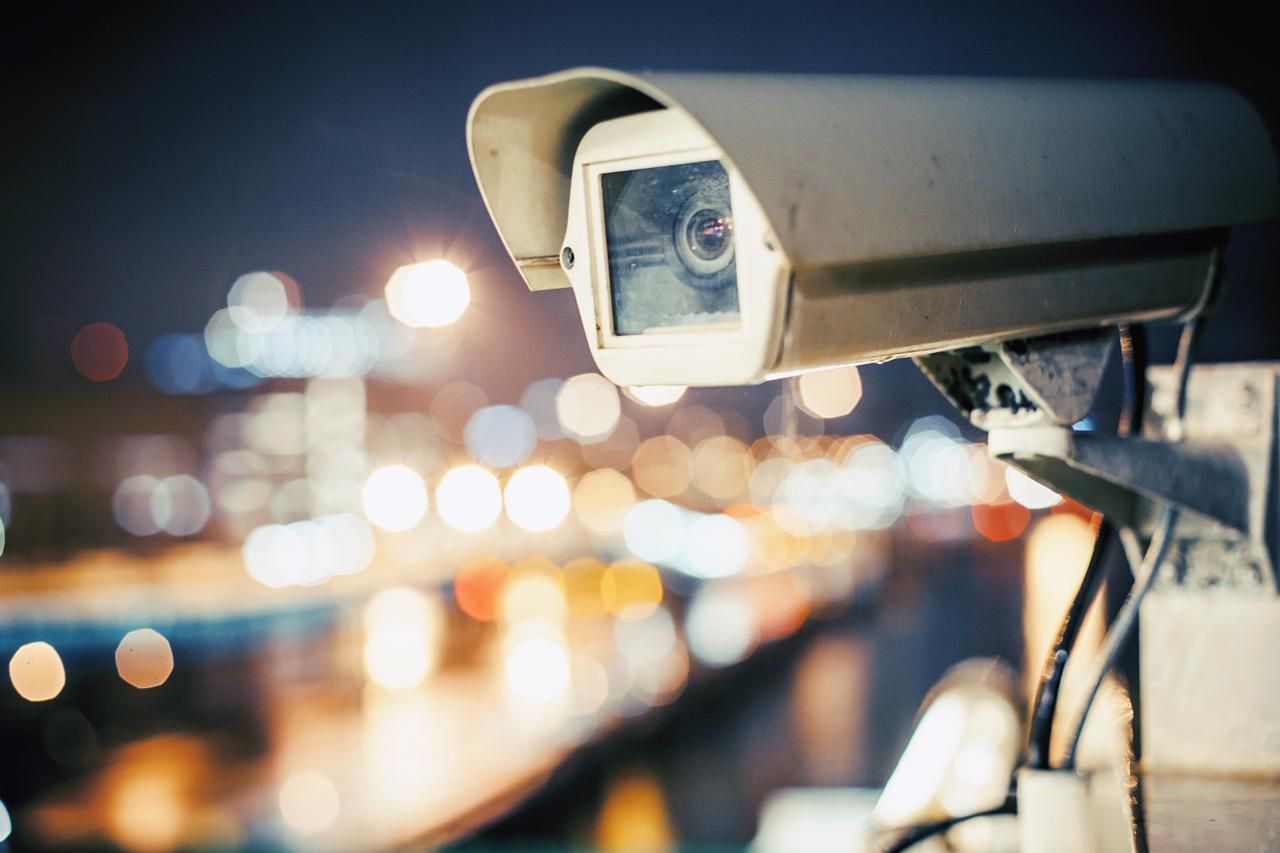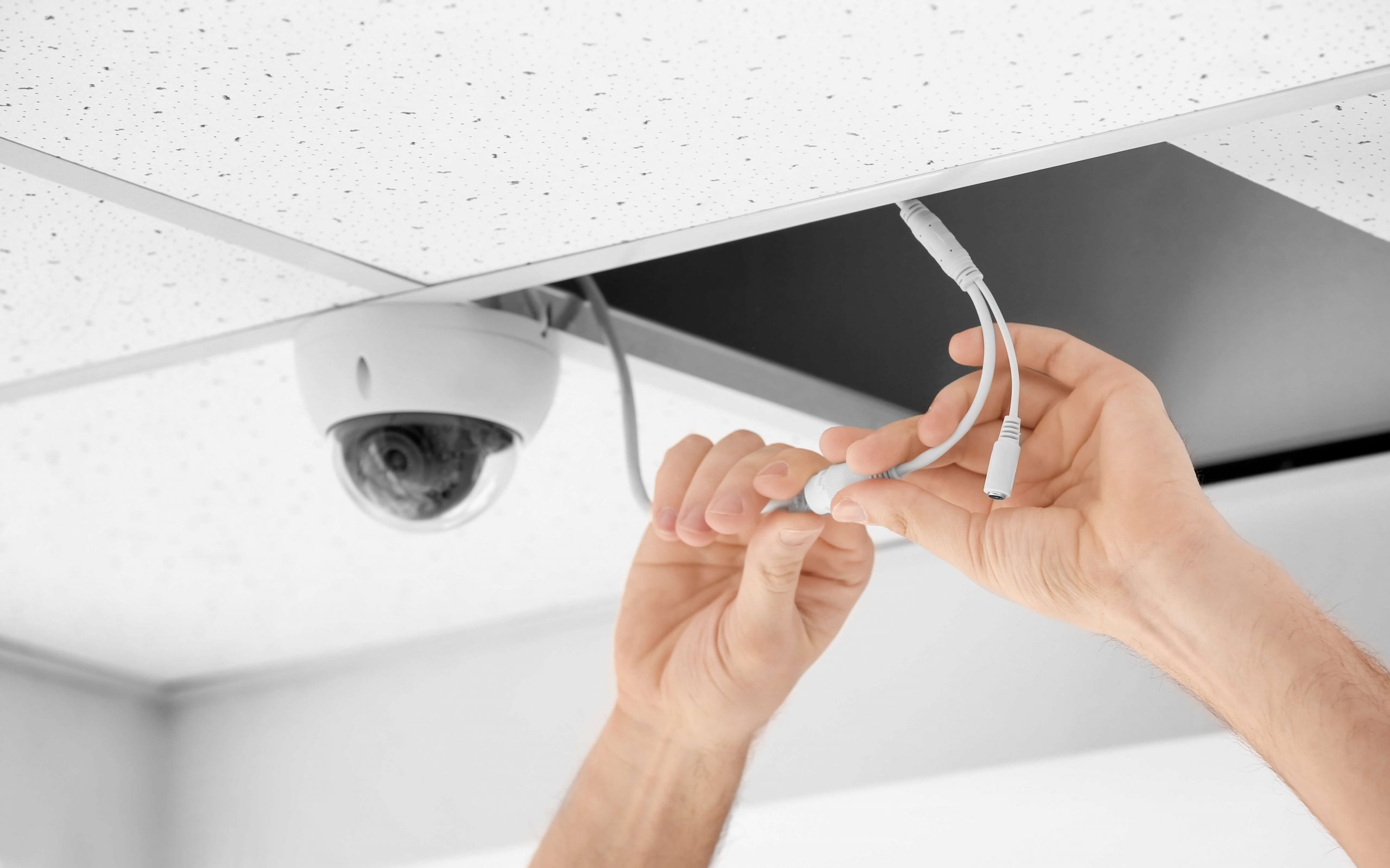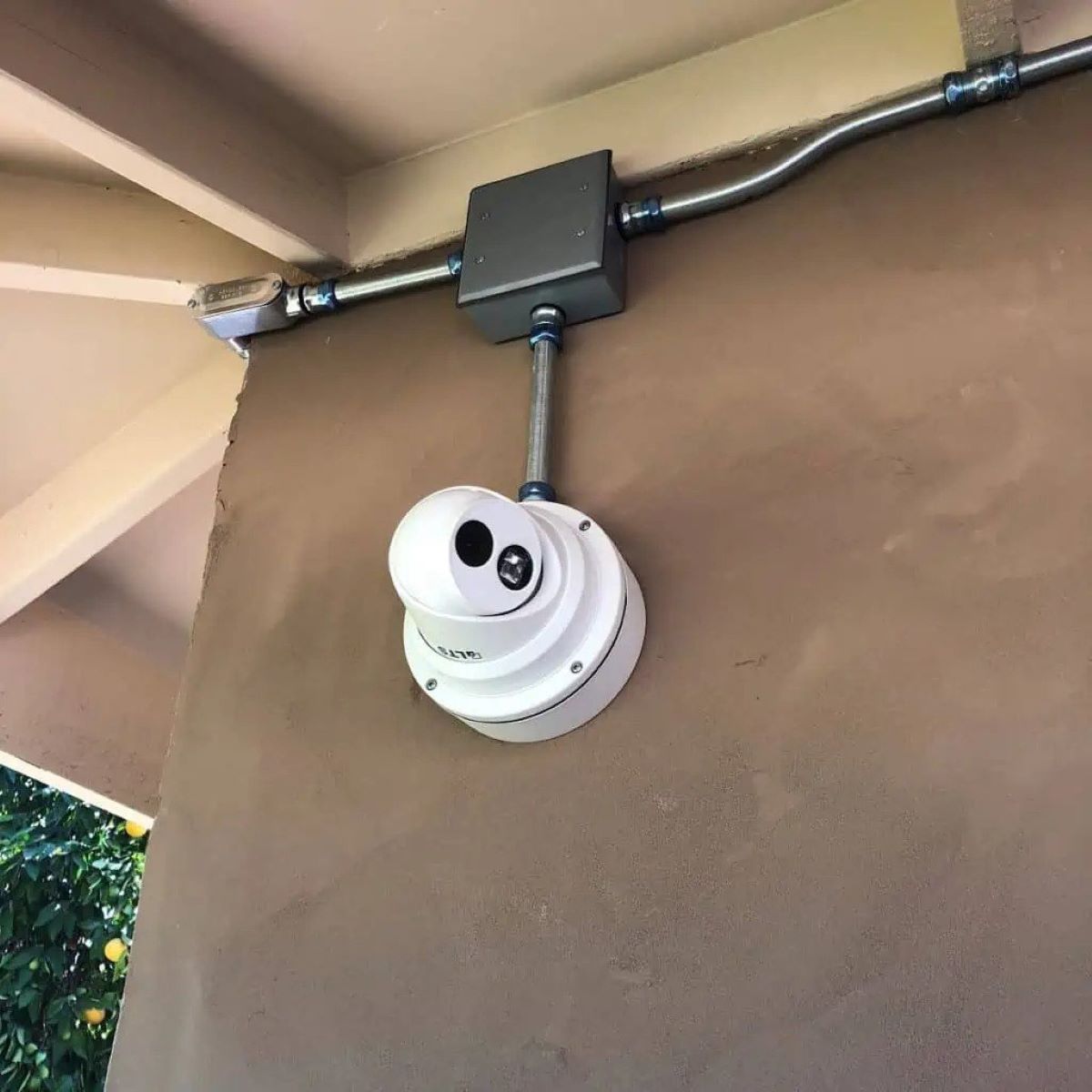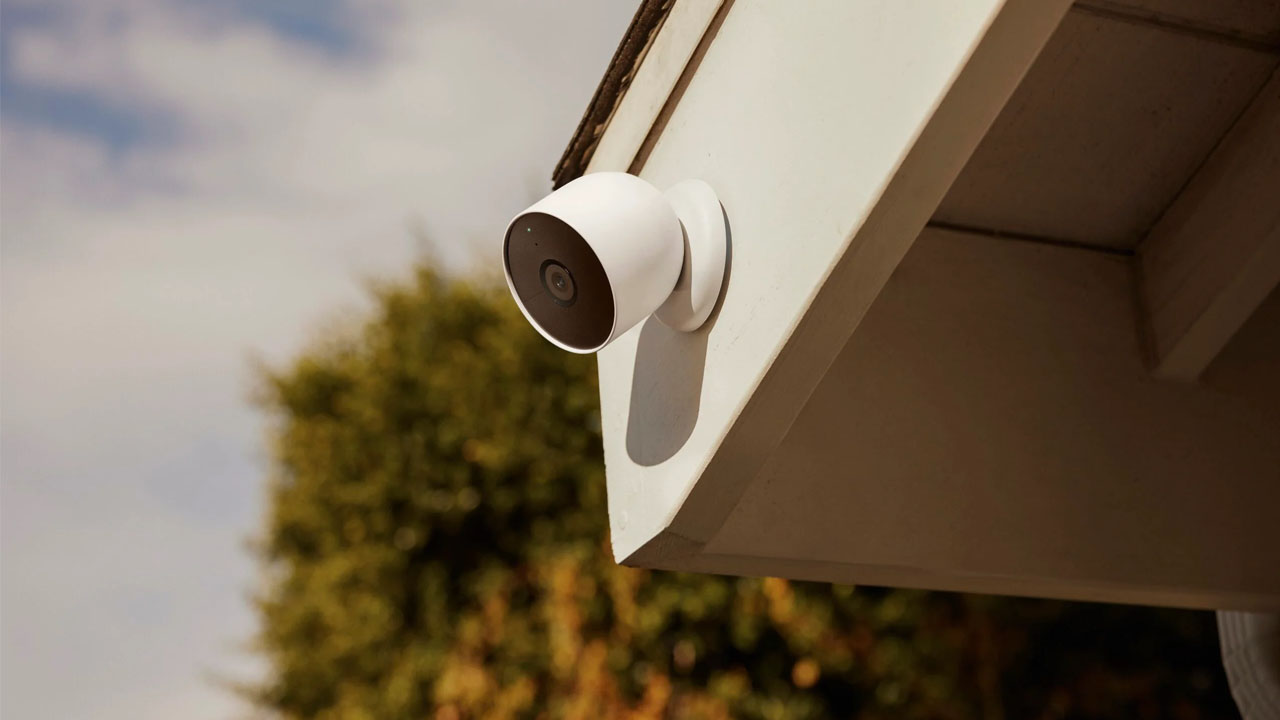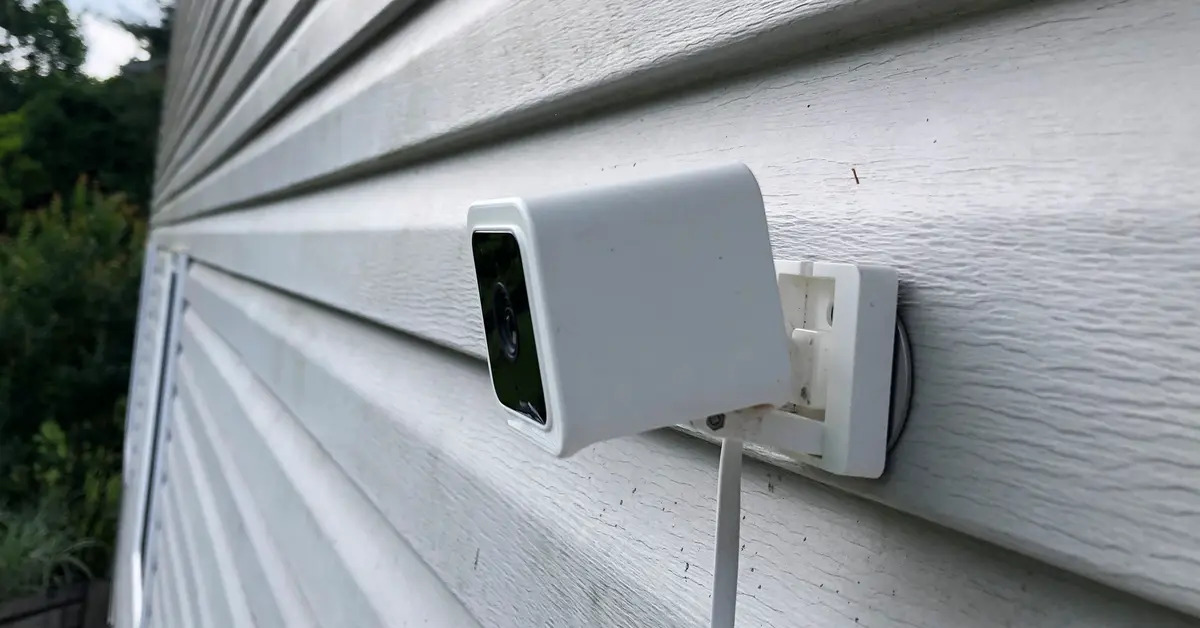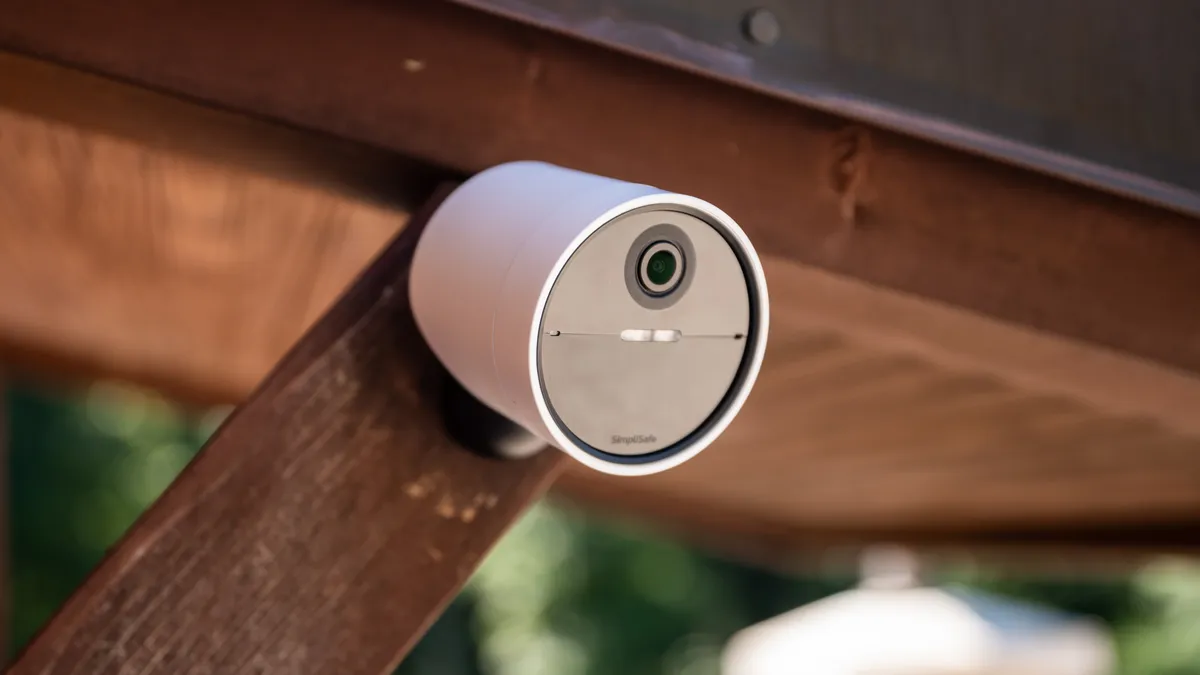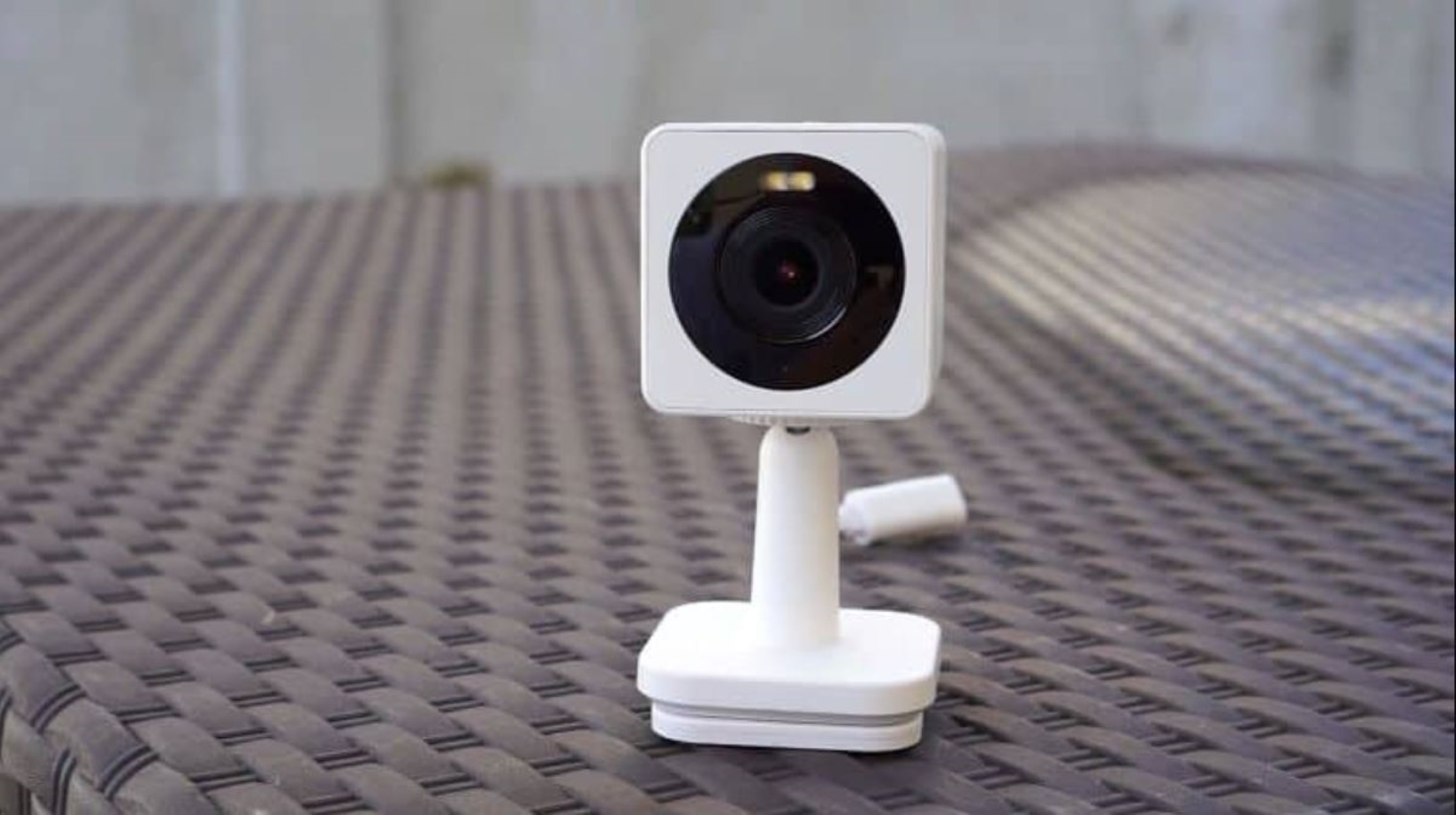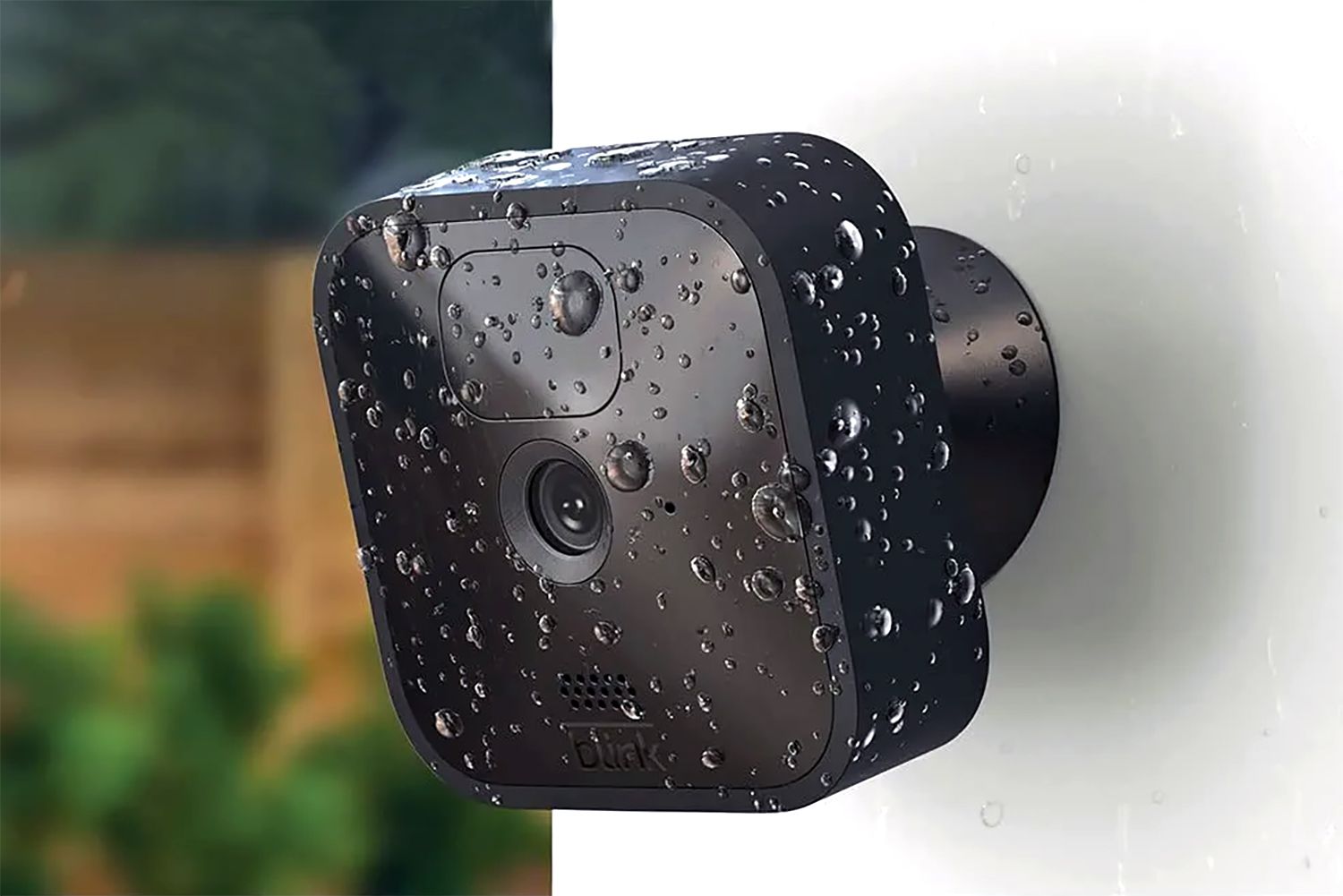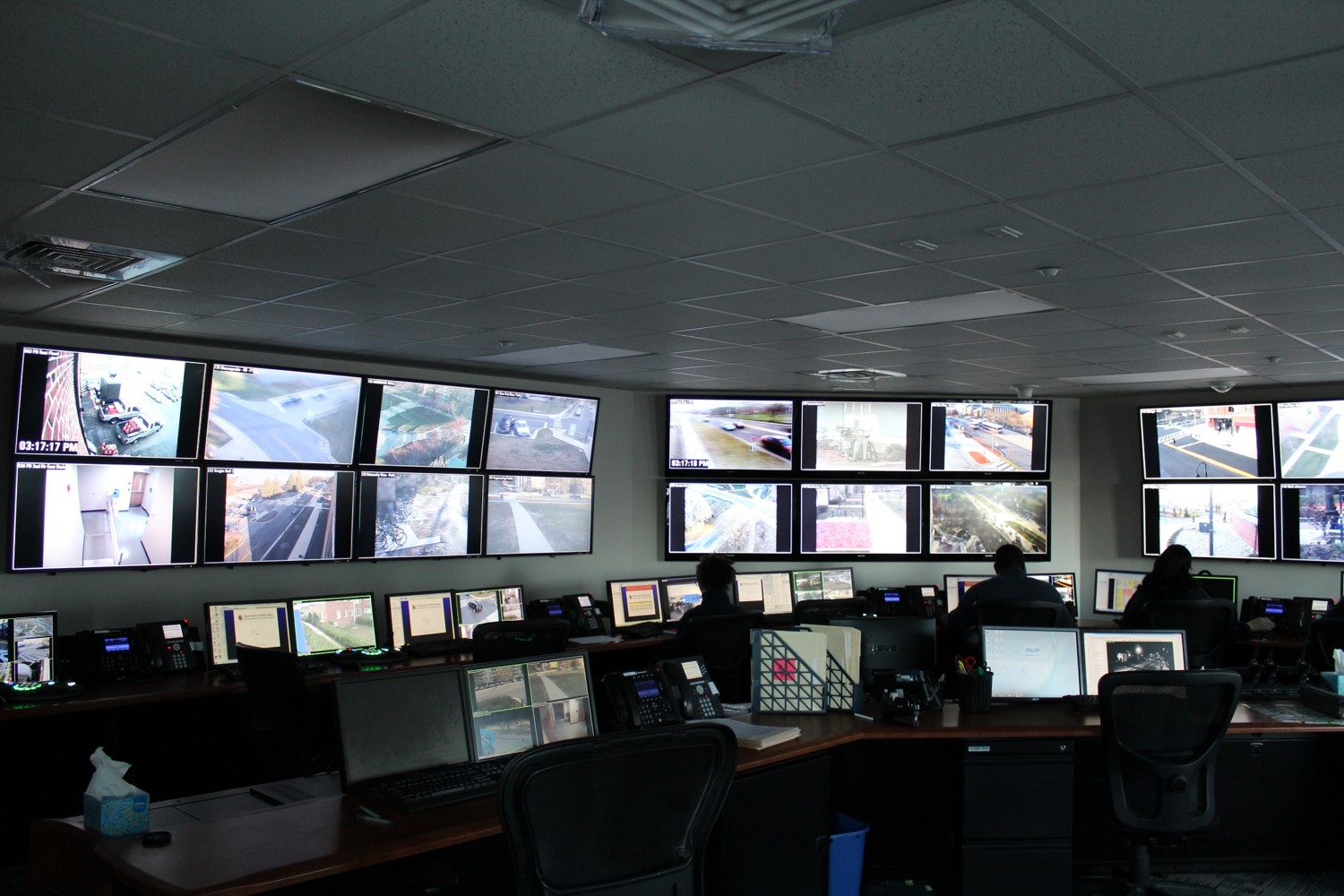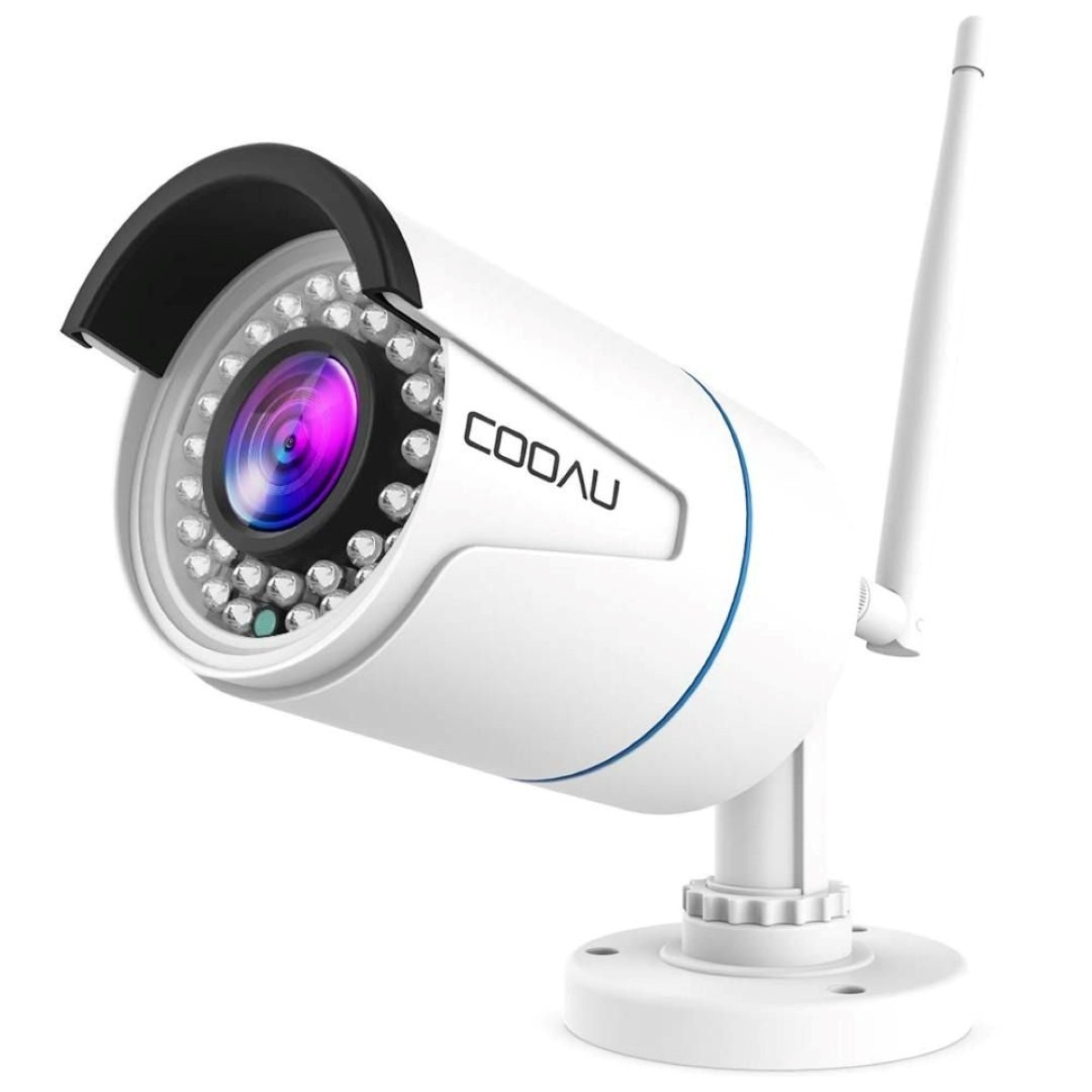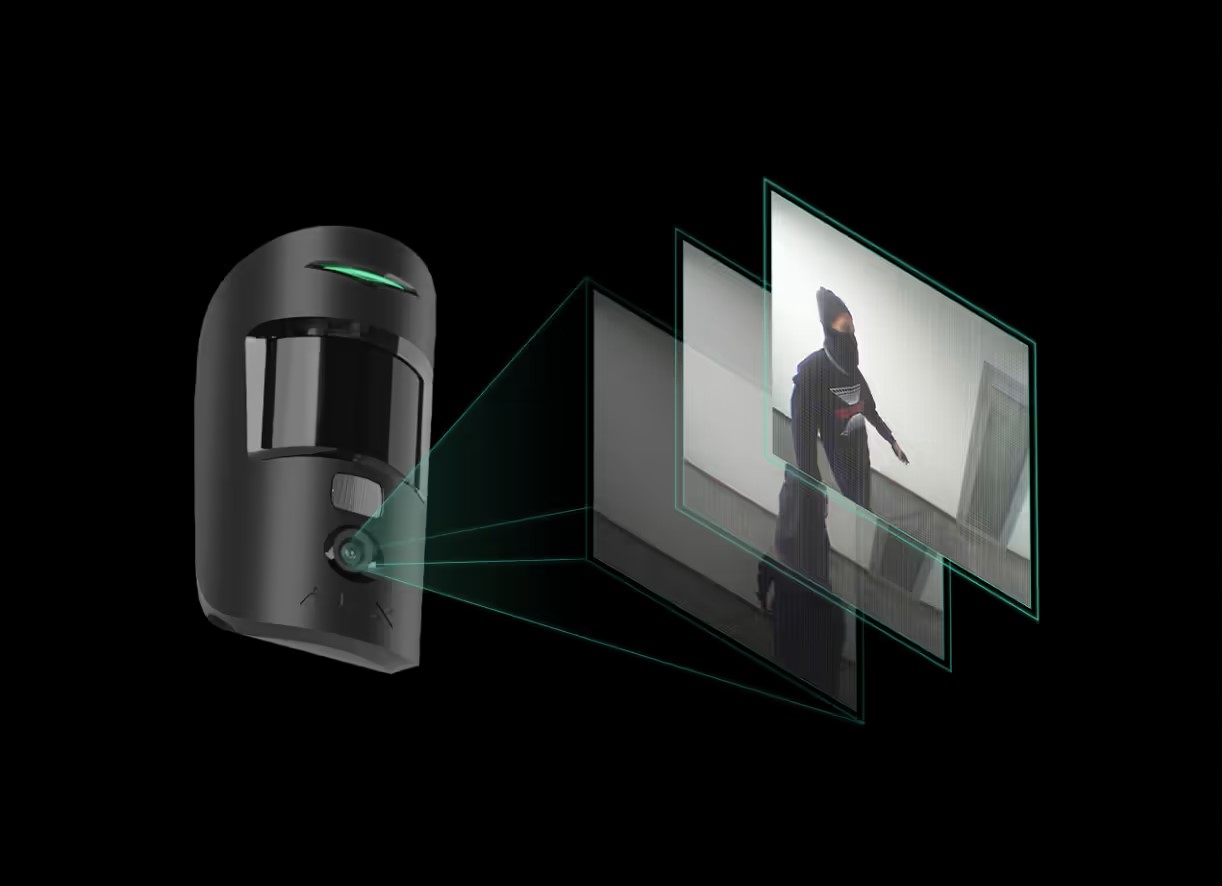Home>Home Security and Surveillance>Where To Position CCTV Cameras At Home
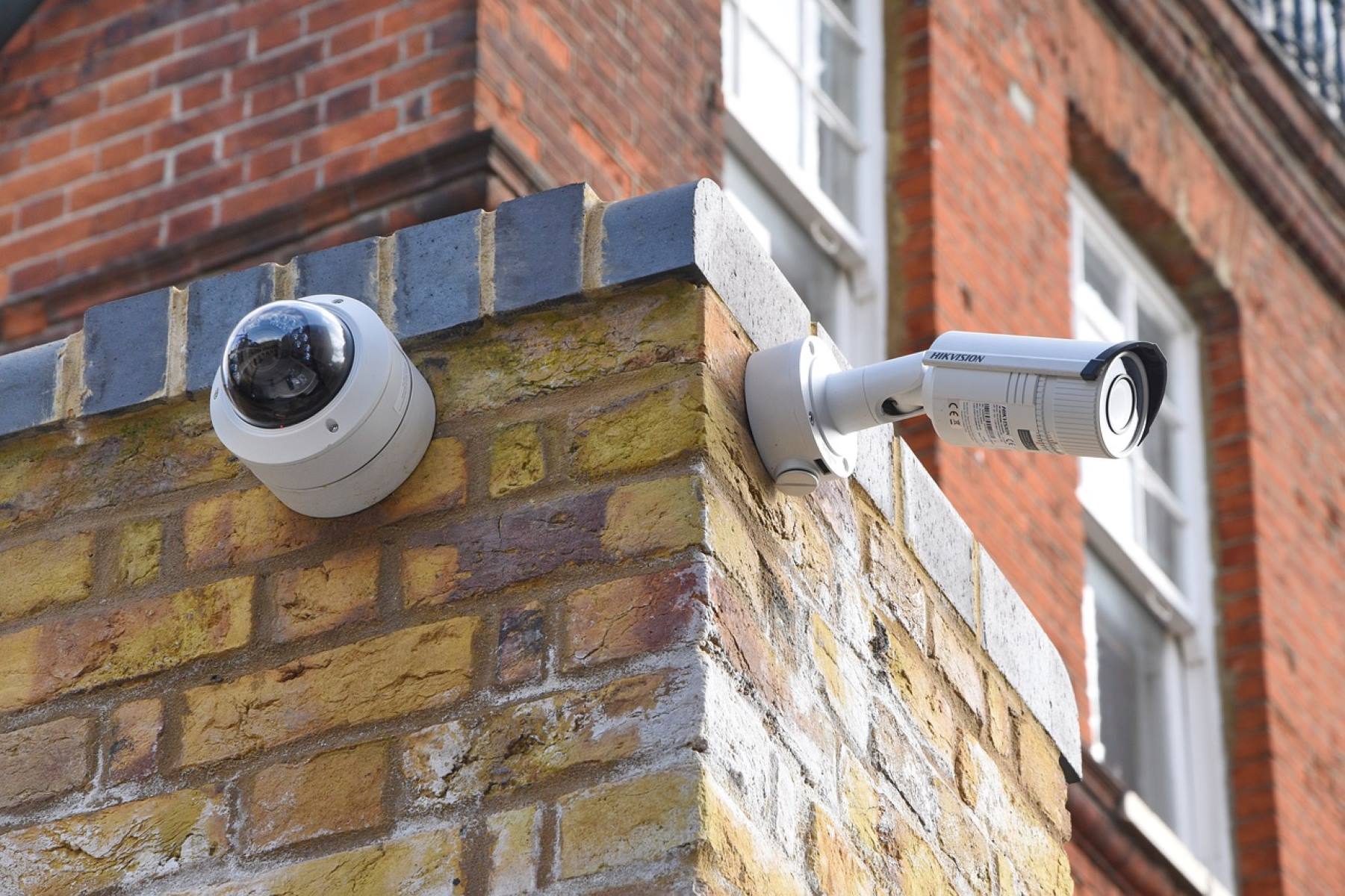

Home Security and Surveillance
Where To Position CCTV Cameras At Home
Modified: March 6, 2024
Discover the best positions to install CCTV cameras for optimal home security and surveillance. Protect your home with strategically placed cameras to deter intruders and monitor your property.
(Many of the links in this article redirect to a specific reviewed product. Your purchase of these products through affiliate links helps to generate commission for Storables.com, at no extra cost. Learn more)
Introduction
Welcome to the world of home security and surveillance! In today’s ever-changing landscape, it’s essential to prioritize the safety of your loved ones and the protection of your valuable assets. With the advancement of technology, the availability and affordability of home security systems have increased, making it easier than ever to monitor and secure your home.
One crucial aspect of a comprehensive home security system is the placement of CCTV cameras. Choosing the right locations for these cameras can greatly enhance the effectiveness of your surveillance system. By strategically positioning the cameras, you can maximize coverage, deter potential intruders, and promptly detect any suspicious activities.
In this article, we will explore various areas of your home and discuss the optimal placement for CCTV cameras. Remember, every home is unique, and it’s essential to assess your specific needs and vulnerabilities before finalizing the camera placement. Let’s dive into the different areas where you should consider positioning your surveillance cameras.
Key Takeaways:
- Strategically placing CCTV cameras in areas like the front entrance, backyard, and garage can deter intruders, prevent theft, and provide peace of mind for homeowners, enhancing overall home security.
- By respecting privacy laws, integrating cameras into a centralized system, and focusing on key areas, homeowners can effectively monitor and protect their property, creating a powerful deterrent to potential intruders and reviewing any incidents that may occur.
Read more: Where To Position Home Security Cameras
Front Entrance
Your front entrance is the primary access point to your home, making it a critical area to monitor. Placing a CCTV camera here provides you with a clear view of anyone approaching or entering your property. This can be a strong deterrent for potential burglars or intruders.
When positioning a camera at the front entrance, it’s important to consider the height and angle of the camera. Mounting the camera at a higher location, such as above the front door or on the second-floor balcony, provides a wider field of view and reduces the risk of tampering. Angle the camera downwards slightly to capture facial details of individuals entering your property.
Additionally, consider placing a camera that offers night vision capabilities. This ensures visibility in low-light conditions and enables you to monitor your front entrance round the clock. Some cameras also come with motion detection features, alerting you of any movement near the front entrance, even when you’re not at home.
Remember to check your local laws and regulations regarding the placement and recording of CCTV cameras. It’s crucial to respect privacy laws while ensuring the safety and security of your home.
Backyard
Your backyard is often a space where you and your family spend time relaxing, entertaining, and enjoying outdoor activities. It’s important to ensure the safety and security of this area as well. Placing CCTV cameras in your backyard can help monitor any unauthorized access, prevent theft, and keep an eye on children or pets playing outdoors.
When positioning cameras in your backyard, consider covering the entire area to eliminate blind spots. Place cameras strategically to capture entrances, such as gates or back doors. If you have a large backyard, consider using multiple cameras to provide comprehensive coverage.
Mounting cameras on exterior walls or using weatherproof cameras specifically designed for outdoor use is essential to withstand the elements. Make sure the cameras are positioned out of reach and protected from potential tampering.
In addition to general monitoring, you may want to focus on specific areas of interest in your backyard. For example, if you have a shed or workshop, placing a camera to cover this area can help prevent theft of tools and equipment.
If you have a swimming pool, it’s crucial to have a camera or cameras focused on this area. Not only can it help ensure the safety of anyone using the pool, but it also serves as a deterrent for potential trespassers or unauthorized pool access.
Consider using cameras with advanced features such as motion detection and remote access. These features allow you to receive real-time alerts on your smartphone or other devices when motion is detected in your backyard, even when you’re away from home.
Remember to be mindful of any privacy concerns and comply with local laws when monitoring your backyard with CCTV cameras.
Garage
Your garage is not only a place to park your vehicles but also an entry point to your home. It’s important to secure this area effectively to protect your vehicles, tools, and other valuable belongings stored inside. Placing CCTV cameras in and around your garage can help deter thieves and provide evidence in case of any theft or break-ins.
When positioning cameras in your garage, consider covering the main entrance, as well as any windows or side entrances. Mount the cameras at a height that provides a clear view of the garage interior, including the doors and windows.
If you have valuable vehicles, motorcycles, or bicycles stored in your garage, consider placing cameras that specifically cover these areas. Additionally, if you have a workbench or storage area with valuable tools, placing cameras to monitor these spaces is crucial.
Ensure that the cameras have good lighting conditions, either through natural light or proper artificial lighting. It’s also beneficial to use cameras with night vision capabilities to maintain surveillance even in low-light or dark conditions.
Consider connecting the garage cameras to your main home security system, allowing for integrated monitoring and control. This enables you to view and manage all cameras from a centralized location, enhancing the overall security of your property.
Furthermore, consider using cameras with motion detection features to alert you of any movement or unauthorized access in your garage. These notifications can be sent to your mobile device or a dedicated security monitoring system.
Always check local regulations and privacy laws regarding the recording of CCTV cameras in areas such as the garage. Be mindful of the placement to ensure the cameras do not invade the privacy of neighboring properties.
By strategically positioning cameras in your garage, you can enhance the overall security of your home and provide peace of mind knowing that your vehicles and belongings are under surveillance.
Driveway
Your driveway is the pathway leading to your home and serves as the entry point for vehicles and visitors. Securing this area with CCTV cameras can provide valuable surveillance and help protect your property from unauthorized access and potential theft.
When positioning cameras for your driveway, consider covering the entire length of the driveway to capture any approaching vehicles or individuals. Depending on the length and width of your driveway, you may need multiple cameras to ensure comprehensive coverage.
Mount the cameras at a height that provides a clear view of the entire driveway. Angle them towards the entrance of the driveway to capture license plates and facial features of anyone entering or leaving the property.
Consider using cameras with motion detection capabilities to minimize the amount of recorded footage and focus on detecting any suspicious activity. This can include vehicles lingering in front of your driveway or people approaching on foot. Motion-activated cameras can send alerts to your phone, allowing you to monitor and respond to any potential security concerns promptly.
For driveways that are longer or have limited natural lighting, it’s crucial to use cameras equipped with night vision capabilities. This ensures that you have surveillance even during low-light or nighttime hours.
In addition to monitoring vehicles and visitors, your driveway cameras can also help with general traffic monitoring. This can be useful for tracking delivery trucks, service providers, or monitoring the arrival of invited guests.
It’s important to position the cameras in a way that their view does not impede the privacy of neighboring properties or public spaces. Always ensure that you comply with local regulations and privacy laws when placing CCTV cameras in your driveway.
By having surveillance cameras positioned strategically in your driveway, you can enhance the security of your home, deter potential intruders, and have visual records for any incidents that may occur.
Read more: What Is CCTV Security Cameras
Patio or Deck
Your patio or deck is a space where you and your family likely spend a significant amount of time enjoying the outdoors. To ensure the safety and security of this area, consider placing CCTV cameras to monitor any activities and potential threats.
When positioning cameras for your patio or deck, first determine which areas you want to monitor. This can include entrances to your home from the patio or deck, as well as any valuable outdoor equipment like grills or furniture. Mount the cameras in a location that provides a clear view of these areas.
Consider using weatherproof cameras specifically designed for outdoor use to withstand the elements. These cameras should be installed at a height that is out of reach to prevent tampering or damage.
It is also important to take into account the lighting conditions on your patio or deck. Ensure that the cameras have a clear line of sight and provide sufficient light levels for visual clarity. Additionally, consider using cameras with infrared or night vision capabilities to maintain surveillance even in low-light conditions.
If you frequently entertain guests on your patio or deck, consider using cameras with a wide field of view to capture the entire area. This can be particularly useful for large gatherings or events, allowing you to monitor any possible security concerns.
For added convenience and security, you can integrate the cameras on your patio or deck into your overall home security system. This enables you to have centralized monitoring and control, and access to camera footage from one location, improving the overall security of your home.
Always be mindful of your neighbors’ privacy when positioning cameras on your patio or deck. Ensure that the cameras are not capturing or invading their personal space or property.
By strategically placing CCTV cameras on your patio or deck, you can enjoy peace of mind and a greater sense of security while enjoying outdoor activities with your family and friends.
Pool Area
The pool area of your home is a place of recreation and relaxation. However, it’s important to ensure the safety and security of this area as well. Placing CCTV cameras around your pool can help monitor activity, prevent accidents, and deter unauthorized access.
When positioning cameras in your pool area, consider covering the entire area to eliminate blind spots. Place cameras strategically to capture all entrances to the pool area, including gates or doors leading to the pool deck. Mount the cameras at a height that provides a clear view of the pool and surrounding areas.
Choose cameras that are specifically designed for outdoor use and can withstand exposure to water and other outdoor elements. Ensure that the cameras you select have a high enough resolution to capture details clearly, allowing you to identify individuals if necessary.
It’s also important to consider lighting conditions in the pool area. Ensure that the cameras have proper lighting or use cameras with night vision capabilities to maintain surveillance even in low-light or nighttime conditions.
In addition to the mainstream surveillance cameras, you may also want to consider underwater cameras for your pool. These cameras can provide an extra level of security and allow you to monitor activity within the pool itself. However, be aware that underwater cameras may have specific installation requirements and should be installed by professionals to ensure safety and proper functioning.
Remote access and motion detection features are beneficial in a pool area as well. They allow you to receive real-time alerts on your smartphone or other devices if any motion or activity is detected in or around the pool when you are not present. This can help you respond quickly to potentially dangerous situations or unauthorized access.
Always comply with local regulations and privacy laws when positioning cameras in your pool area. Be mindful of the placement to avoid capturing the privacy of your neighbors or other individuals in the vicinity.
By strategically placing CCTV cameras around your pool area, you can enhance the safety and security of this recreational space and create a greater peace of mind for yourself and your family.
Position CCTV cameras at entry points such as front and back doors, garage, and first-floor windows. Also, consider areas with valuable items like the living room or home office.
Living Room
Your living room is the heart of your home, where you and your family spend a significant amount of time relaxing, entertaining, and enjoying quality time together. While it may not be the first area that comes to mind when considering CCTV camera placement, securing your living room can provide valuable surveillance and protection for your home.
When positioning cameras in your living room, it’s important to strike a balance between visibility and aesthetics. Mount the cameras in inconspicuous locations that still provide a clear view of the entire room. Consider placing them high on the walls or in the corners, where they are less likely to be noticed but still capture the surroundings effectively.
Choose cameras with high-definition resolution to ensure clear and detailed footage. This is especially important if the living room is a high-traffic area or if valuable items are displayed, such as artwork or electronics.
One of the key advantages of placing cameras in the living room is the ability to monitor for suspicious activity, such as unauthorized entry or theft, when you’re not at home. Remote access features allow you to view the live feed or recordings from your smartphone or computer, providing peace of mind and enabling you to take immediate action if necessary.
Consider integrating your living room cameras into your overall home security system. This allows for centralized monitoring and control, making it easier to manage all cameras and access the footage from one location.
Privacy is a crucial consideration when placing cameras in the living room. It’s important to respect the privacy of your family members and guests. Avoid positioning cameras in areas where they may capture private conversations or activities.
Be sure to check local regulations and privacy laws regarding the recording and monitoring of living spaces. Complying with these regulations will help ensure the cameras are used ethically and legally.
By strategically placing CCTV cameras in your living room, you can enhance the security of your home, monitor for potential threats, and have peace of mind knowing that your family and belongings are under surveillance.
Kitchen
The kitchen is the hub of activity in many homes, where meals are prepared, family members gather, and valuable appliances and items are stored. Placing CCTV cameras in the kitchen can provide added security and surveillance for this important area of your home.
When positioning cameras in the kitchen, consider covering the entire space to ensure comprehensive coverage. Mount the cameras in unobtrusive locations such as high on the walls or in the corners, where they can capture a wide angle of the room without being obtrusive or impeding daily activities.
Choose cameras with high-definition resolution to capture detailed footage of the kitchen area. This can be especially useful in monitoring any suspicious activities or potential theft of valuable items like appliances, electronics, or expensive kitchenware.
In the kitchen, it’s important to consider the lighting conditions. Ensure that the cameras have adequate lighting or choose cameras with low light or night vision capabilities to maintain surveillance even in low-light or nighttime conditions.
One beneficial feature to consider is the integration of cameras with motion detection capabilities. This allows the cameras to send alerts to your mobile device or computer when any movement is detected in the kitchen, even when you’re not at home. This can help identify potential intruders or unusual activities in real-time.
Privacy is a significant consideration when placing cameras in the kitchen. To respect the privacy of household members and guests, avoid positioning cameras in areas where they may capture sensitive activities or conversations. Focus on covering entry points and high-value areas instead.
Ensure that the placement of the cameras adheres to local regulations and privacy laws regarding the recording and monitoring of living spaces, including kitchens.
By strategically placing CCTV cameras in your kitchen, you can enhance the security of this vital space, deter potential theft, and have peace of mind knowing that your family and valuable belongings in the kitchen are under surveillance.
Read more: How To Make A CCTV Camera At Home
Bedrooms
Your bedrooms are personal sanctuaries, where you retreat for rest and relaxation. While it may feel intrusive to place CCTV cameras in these private spaces, careful placement can enhance the security of your home and provide peace of mind.
When considering camera placement in bedrooms, prioritize the security of entry points such as doors and windows. Position cameras to capture clear views of these areas. This can be especially important for ground floor bedrooms or those with direct access to the exterior of your home.
Choose cameras that are discreet and blend well with the décor of the room. Consider using small, inconspicuous cameras or disguising the cameras within everyday objects like alarm clocks or wall decorations.
Respect the privacy of individuals, especially when placing cameras in personal bedrooms. Avoid positioning cameras in areas where they may capture sensitive activities or invade personal spaces, such as bathrooms or dressing areas.
It is essential to secure any footage from bedroom cameras to preserve the privacy of those who occupy the space regularly. Consider implementing password-protected access to view or manage camera footage, and ensure that only trusted individuals have access to this information.
While the primary focus of bedroom camera placement is on entry points, you may also choose to monitor valuables or sensitive items stored within the room. Place cameras to cover areas where jewelry, money, or other valuable possessions may be kept.
Always check and comply with local regulations and privacy laws regarding the placement of cameras in personal spaces, such as bedrooms. It’s crucial to strike a balance between security and privacy to ensure the well-being of your household members.
By thoughtfully placing CCTV cameras in bedrooms, you can enhance the security of your home and have peace of mind knowing that key entry points are under surveillance, all while respecting the privacy of your family members.
Home Office
Your home office is where you handle important documents, work on confidential projects, and store valuable equipment. Keeping this area secure is crucial to protect sensitive information and maintain productivity. Placing CCTV cameras in your home office can provide an added layer of security and surveillance.
When positioning cameras in your home office, consider covering the entire space while focusing on key areas like entry points and storage areas. Mount cameras in discreet locations that offer clear views of the room, such as high on the walls or in the corners.
Choose cameras that blend seamlessly with the office decor and are inconspicuous. Opt for small, compact cameras or hide them within everyday objects like bookshelves or desk accessories. This helps maintain the professional atmosphere of your office while providing necessary surveillance.
Ensure that the cameras are placed in a way that does not capture sensitive information or invade the privacy of individuals using the space. Avoid positioning cameras in areas where computer screens or confidential documents may be visible.
Consider using cameras with high-definition resolution to capture clear and detailed footage of your home office. This is especially important if you’re storing valuable equipment or if you handle sensitive information that needs extra protection.
Connect your home office cameras to your overall home security system. This allows for centralized monitoring and control, making it easier to manage all cameras and access the footage from one location.
Implement appropriate security measures to protect any recorded footage from your home office cameras. Ensure that only authorized individuals have access to the footage and that it is stored securely.
Always adhere to local regulations and privacy laws regarding the recording and monitoring of personal spaces, including home offices. Ensure that the placement of the cameras respects the privacy rights of individuals working in the office.
By strategically placing CCTV cameras in your home office, you can enhance the security of your workspace, protect your confidential information, and have peace of mind knowing that your valuable equipment and documents are under surveillance.
Basement
Your basement is a versatile space that can serve various purposes such as storage, recreational area, or even an extra living space. While often tucked away from the main living areas, it’s essential to secure your basement by placing CCTV cameras to prevent unauthorized access and protect your belongings.
When positioning cameras in your basement, consider covering all entrances and areas of interest. Place cameras strategically to capture the main entrance, windows, or any valuable items stored in the basement. Mount the cameras at a height that allows for a clear view of the space.
Choose cameras that are specifically designed for low-light environments, as basements typically have limited natural light. Cameras with infrared or night vision capabilities are particularly useful for maintaining surveillance even in dark conditions.
Make sure the cameras are placed in discreet locations that do not interfere with your regular activities or obstruct the functionality of the basement space. Consider using cameras that blend with the surroundings or can be easily hidden.
In addition to monitoring potential intruders, basement cameras can also help detect water leaks or other issues that may arise in this area of your home. Motion detection features can be particularly useful in these cases, sending alerts to your phone or other devices if any movement is detected.
Connect your basement cameras to your overall home security system for centralized monitoring and control. This allows you to access and manage all cameras from a single location, enhancing the overall security of your property.
Ensure that you comply with local regulations and privacy laws regarding the recording and monitoring of private spaces such as basements. Be mindful of the placement to respect the privacy of individuals living or spending time in the basement.
By strategically placing CCTV cameras in your basement, you can enhance the security of your home, deter potential intruders, and quickly detect any issues that may arise in this important area of your property.
Outbuildings
Outbuildings such as sheds, detached garages, or workshops are often filled with valuable items like tools, equipment, and outdoor furniture. Securing these structures with CCTV cameras is essential to deter theft and protect your belongings.
When positioning cameras for outbuildings, consider covering all entry points, including doors and windows. Place cameras strategically to provide clear views of these areas. Mount them at a height that ensures proper coverage while minimizing the risk of tampering.
Choose cameras that are specifically designed for outdoor use and can withstand exposure to the elements. Ensure that they have a high enough resolution to capture details clearly, enabling you to identify individuals if necessary.
If you have multiple outbuildings or a large property, you may need to use several cameras to provide comprehensive coverage. Consider establishing a network of cameras that can be accessed and controlled centrally to simplify management and monitoring.
Consider implementing motion detection features in your outbuilding cameras. This can help minimize the amount of recorded footage and promptly alert you to any suspicious activity. You can configure the cameras to send real-time alerts to your mobile device or a dedicated security monitoring system.
It’s important to secure any footage captured by the outbuilding cameras to maintain privacy and confidentiality. Password-protect the access to view or manage camera footage and ensure that only trusted individuals have access to this information.
Check local regulations and privacy laws regarding the recording and monitoring of outbuildings on your property. Comply with these regulations to ensure that your camera placement aligns with legal requirements and respects the privacy of neighboring properties.
By thoughtfully placing CCTV cameras in your outbuildings, you can enhance the security of these structures, deter potential theft, and have peace of mind knowing that your valuable belongings are under surveillance.
Conclusion
Securing your home with a comprehensive CCTV camera system is an important step towards enhancing the safety and security of your property. By strategically placing cameras in various areas of your home, you can deter potential intruders, monitor for suspicious activities, and have peace of mind knowing that your loved ones and valuable belongings are under surveillance.
When positioning CCTV cameras, it’s crucial to consider the unique layout and needs of your home. Focus on key areas such as entry points, high-value spaces, and areas prone to unauthorized access. Mount cameras at appropriate heights and angles to ensure optimal coverage and visibility.
In the front entrance, cameras can deter potential burglars or intruders. Meanwhile, in the backyard, garage, and driveway, cameras provide valuable surveillance to prevent theft and monitor for any suspicious activities. Placing cameras on the patio or deck and in the pool area helps ensure the safety of your outdoor spaces. In living rooms, kitchens, bedrooms, home offices, basements, and outbuildings, cameras provide security and surveillance specific to these spaces.
Remember to comply with local regulations and privacy laws when placing CCTV cameras in both interior and exterior spaces of your home. Respect the privacy of your family members, guests, and neighbors by positioning the cameras to focus on key areas without invading personal spaces.
Integrating your CCTV cameras into an overall home security system allows for centralized monitoring and control. This simplifies management and provides a convenient way to access and review camera footage from one location.
By strategically placing CCTV cameras throughout your home, you can effectively monitor and protect your property. Remember, a well-placed camera system can act as a powerful deterrent to potential intruders, and it provides an invaluable tool for reviewing any incidents that may occur. Prioritize the safety and security of your home by investing in a comprehensive surveillance system today.
Frequently Asked Questions about Where To Position CCTV Cameras At Home
Was this page helpful?
At Storables.com, we guarantee accurate and reliable information. Our content, validated by Expert Board Contributors, is crafted following stringent Editorial Policies. We're committed to providing you with well-researched, expert-backed insights for all your informational needs.
